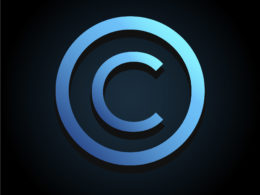Throughout October, the name “Jason” conjures images of a white, plastic hockey mask, which can be found adorning the shelves of Halloween stores everywhere. The mask is almost synonymous with Halloween itself. The mask is notorious for being worn by “Jason,” a serial killer character first introduced in the original Friday the 13th horror film, which dominated the box office in 1980.1[1]Domestic Box Office for 1980, BOX OFFICE MOJO, https://www.boxofficemojo.com/year/1980/ (last visited Nov. 1, 2021). In 1979, Victor Miller, a professional screenwriter, created the screenplay for Friday the 13th in collaboration with the Manny Company, a production company.2[2]Horror Inc. v. Miller, No. 18-3123-cv, 2021 U.S. App. LEXIS 29479 (2d Cir. Sept. 30, 2021). Recently, Miller successfully reclaimed his authorship rights to the screenplay from the Manny Company and its successor-in-interest, Horror, Inc.3[3]Id. Miller recovered his copyright by invoking his termination right.4[4]Id. at *239. The Copyright Act of 1976 maintains that a “termination right” is the right of an artist to discontinue a prior grant or transfer of his or her copyright to another party.5[5]Copyright Act of 1976, 17 U.S.C. § 203(a) (2018).
Under § 203(a) of the Copyright Act, an exclusive or nonexclusive grant of a transfer or license of a copyright assignment executed by an author on or after January 1, 1978 is subject to termination by the original author thirty-five years from the date of the grant, subject to certain conditions.6[6]Id. In order to begin the termination process, the grantor must serve a written notice, in advance, informing the grantee of his or her intention. Authors may not, however, reclaim rights for “works made for hire,” or works “prepared by an employee within the scope of his or her employment.”7[7]17 U.S.C. § 101. The purpose of the termination right in the Copyright Act is to promote fairness and provide a means for authors to access profits from works whose rights they granted away, but which later became successful.8[8]Horror Inc. v. Miller, No. 18-3123-cv, 2021 U.S. App. LEXIS 29479 (2d Cir. Sept. 30, 2021), aff’g Horror Inc. v. Miller, 335 F. Supp. 3d 273, 284 (D. Conn. 2018).
Based on this statutory framework, Miller sought to invoke his termination right and reclaim his rights to Friday the 13th.9[9]Id. at *239. In response, the Manny Company and Horror, Inc. filed suit against Miller, claiming that his script was a work-for-hire and, therefore, that Miller was precluded from invoking termination rights under § 203(a).10[10]Id. at *240. Miller counterclaimed, arguing that he was an independent contractor at the time he wrote the script and was properly entitled to invoke his termination right.11[11]Id. On September 20, 2021, the U.S. Court of Appeals for the Second Circuit agreed with Miller, finding that he was indeed an independent contractor.12[12]Id. at *250. As a result, Miller was entitled to invoke his termination right and reclaim his copyright in the screenplay.13[13]Id. at *256.
In reaching this decision, the court applied the Reid framework, which the United States Supreme Court adopted in Cmty. for Creative Non-Violence v. Reid to evaluate whether a person is an “employee” or an “independent contractor” under the Copyright Act.14[14]Horror Inc., 2021 U.S. App. LEXIS 29479, at *250; see Cmty. for Creative Non-Violence v. Reid, 490 U.S. 109 (1989). In Reid, the Court held that the common law agency doctrine should be used to define and differentiate between employees and independent contractors in copyright cases, and developed a balancing test of thirteen factors to help with this analysis.15[15]Horror Inc., 2021 U.S. App. LEXIS 29479, at *243; see Reid, 490 U.S. 109. The Manny Company and Horror, Inc. argued that Miller’s Writer’s Guild of America (“WGA”) membership created an “employer-employee relationship” and that the standard WGA contract Miller signed with the Manny Company in 1977 confirmed that he was an employee.16[16]Horror Inc., 2021 U.S. App. LEXIS 29479, at *245. The court, however, held that copyright law, rather than labor law, controls the work-for-hire determination.17[17]Id. at *247. Further, when various factors from the Reid framework were weighed, including Miller’s skill and prior experience, the lack of tax deductions and employee benefits provided to him, and his credit on the script and other documents as the screenwriter, it became clear to the court that he was an independent contractor.18[18]Id. at *256.
Moving forward, the termination rule will continue to trouble producers and dealmakers alike. Termination rights are just now ripening in many instances given that, as noted above, termination rights may only be invoked thirty-five years after a grant executed on or after January 1, 1978.19[19]Bill Donahue, Copyright Act’s Termination Right Is Having a Moment, LAW360 (Feb. 5, 2021, 9:27 PM), https://www.law360.com/articles/1352945. For example, in 2019, Wes Craven’s estate similarly used the termination rule to regain the rights to Nightmare on Elm Street.20[20]Lindsay Traves, The Future of Horror Hinges on the ‘Friday the 13th’ Lawsuit, CERTIFIED FORGOTTEN (Jan. 29, 2021), https://certifiedforgotten.com/friday-the-13th-lawsuit/. Further, there are currently several pending cases involving the original creators of famous characters, such as “Spider-Man” and “Doctor Strange.”21[21]Kaitlin Booth, Marvel Responds to Avengers, Dr. Strange, Spider-Man Copyright Filings, BLEEDING COOL, https://bleedingcool.com/movies/marvel-responds-to-avengers-dr-strange-spider-man-copyright-filings/. The original creators of the characters recently served copyright termination notices with the hope of reclaiming their rights from Marvel and Disney.22[22]Id. As in Horror Inc. v. Miller, courts must determine the employment status of the creators at the time the characters were created. If the creators win, Marvel and Disney may be forced to either relinquish future use of the characters or pay huge sums to keep their existing rights, as § 203(b) requires that all rights revert back to the author following a successful termination.23[23]17 U.S.C. § 203(b).
Although the termination right is a useful tool for creators who prematurely granted transfers or licenses, frustrated producers may find ways to circumvent the provision through creative contract drafting. For instance, producers might be less willing to pursue screenplays from independent contractors who refuse to part with, or severely limit use of, their intellectual property. Producers may also be inclined to require their writers to sign strict employment contracts to avoid receiving termination notices down the road.24[24]Carolyn Wimbly Martin and Meagan Glynn, Words of Caution for Content Creators: Limitations on the Copyright Termination Right, LUTZKER AND LUTZKER (Nov. 9, 2020), https://www.lutzker.com/words-of-caution-for-content-creators-limitations-on-the-copyright-termination-right/. Despite the significance of the termination right, most cases involving termination rights tend to settle before litigation begins because producers, especially those backed by large studios, are willing to shell out large sums to maintain their rights in a work or lucrative franchise.25[25]Dylan Gilbert, Meredith Rose, and Alisa Valentin, Making Sense of the Termination Right: How the System Fails Artists and How to Fix It, PUBLIC KNOWLEDGE (Dec. 5, 2019), https://www.publicknowledge.org/wp-content/uploads/2019/12/Making-Sense-of-the-Termination-Right-1.pdf. Further, creators are often wary of pursuing litigation due to the high costs involved and the risk of permanently losing their copyright.26[26]Id.
As termination rights become exercisable for more creators, the contracts governing the intellectual property rights of both producers and creators will be increasingly scrutinized. It is a noteworthy moment in time for both copyright law and pop culture, as courts will continue to grapple with these ownership issues as copyright law continues to develop. Although ambiguity remains in how creators and producers will resolve intellectual property ownership, more authors and creators are sure to attempt to reclaim their rights over other beloved films and television series in the future.
Written by: Delia O’Brien
Delia is a 2023 J.D. Candidate at Brooklyn Law School
1 Domestic Box Office for 1980, Box Office Mojo, https://www.boxofficemojo.com/year/1980/ (last visited Nov. 1, 2021).
2 Horror Inc. v. Miller, No. 18-3123-cv, 2021 U.S. App. LEXIS 29479 (2d Cir. Sept. 30, 2021).
3 Id.
4 Id. at *239.
5 Copyright Act of 1976, 17 U.S.C. § 203(a) (2018).
6 Id.
7 17 U.S.C. § 101.
8 Horror Inc. v. Miller, No. 18-3123-cv, 2021 U.S. App. LEXIS 29479 (2d Cir. Sept. 30, 2021), aff’gHorror Inc. v. Miller, 335 F. Supp. 3d 273, 284 (D. Conn. 2018).
9 Id. at *239.
10 Id. at *240.
11 Id.
12 Id. at *250
13 Id. at *256.
14 Horror Inc., 2021 U.S. App. LEXIS 29479, at *250; seeCmty. for Creative Non-Violence v. Reid, 490 U.S. 109 (1989).
15 Horror Inc., 2021 U.S. App. LEXIS 29479, at *243; seeReid, 490 U.S. 109.
16 Horror Inc., 2021 U.S. App. LEXIS 29479, at *245.
17 Id. at *247.
18 Id. at *256.
19 Bill Donahue, Copyright Act’s Termination Right Is Having a Moment, LAW360 (Feb. 5, 2021, 9:27 PM),https://www.law360.com/articles/1352945.
20 Lindsay Traves, The Future of Horror Hinges on the ‘Friday the 13th’ Lawsuit, Certified Forgotten (Jan. 29, 2021), https://certifiedforgotten.com/friday-the-13th-lawsuit/.
21 Kaitlin Booth, Marvel Responds to Avengers, Dr. Strange, Spider-Man Copyright Filings, Bleeding Cool, https://bleedingcool.com/movies/marvel-responds-to-avengers-dr-strange-spider-man-copyright-filings/.
22 Id.
23 17 U.S.C. § 203(b).
24 Carolyn Wimbly Martin and Meagan Glynn, Words of Caution for Content Creators: Limitations on the Copyright Termination Right, Lutzker and Lutzker (Nov. 9, 2020), https://www.lutzker.com/words-of-caution-for-content-creators-limitations-on-the-copyright-termination-right/.
25 Dylan Gilbert, Meredith Rose, and Alisa Valentin, Making Sense of the Termination Right: How the System Fails Artists and How to Fix It, Public Knowledge (Dec. 5, 2019), https://www.publicknowledge.org/wp-content/uploads/2019/12/Making-Sense-of-the-Termination-Right-1.pdf.
26 Id.




